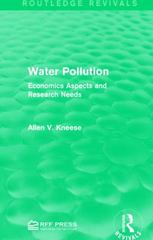Question
Case Study for Managerial Economics Priya was married to Rajesh in the year 2017 and was a homemaker when the second wave of Covid stuck
Case Study for Managerial Economics
Priya was married to Rajesh in the year 2017 and was a homemaker when the second wave of Covid stuck India in April'2021. She could appreciate the pain points of her friends whose children's education had got impacted by the pandemic as the schools were not prepared well for the online learning.
Priya realised that she could use her yoga skills and help fill teach yoga to the children as a stress prevention technique through online sessions. Priya was also inspired by Rajesh's friend Suresh, who had launched online yoga tuitions after the first wave of Covid-19 and had been doing well. The number of students with Suresh are given here as below for the 9 months.
| Apr'20 | May'20 | Jun'20 | Jul'20 | Aug'20 | Sep'20 | Oct'20 | Nov'20 | Dec'20 | Jan'21 |
| 1 | 4 | 6 | 9 | 15 | 18 | 20 | 23 | 26 | 29 |
Priya has kept an initial fixed advertising budget of Rs. 50k, and has extra infrastructure and contacts so that she can have double the numbers as Suresh. She is planning to charge Rs. 2000 per month to each student, and has decided to limit 20 students in a batch. The opportunity cost of her time is Rs. 3000 per hour, and she is planning to take 10 hours of sessions in the month for each batch.
Answer the questions that follow:
- Develop a business forecast for Priya for the 18 months period.
- Develop the cost schedule for Priya showing variable cost and fixed cost
- Find out the breakeven point for Priya when the cumulative profits or losses are zero
- If the minimum price that Priya was willing to teach for was Rs. 1500 per student per month, what is the producer surplus of Priya?
- If the maximum price that an average student could pay was Rs. 3000 per month, what is the consumer surplus of the student?
- Consumer Surplus is the difference between maximum price a consumer can pay and price he actually pays. Here, on an average, maximum price a consumer can pay is 3000 and price he has to pay is 2000 , hence consumer surplus will be 3000-2000=1000
- As the covid-19 situation eases, Priya shall startoperating in a blended format (online and offline classes). Priya observes that the number of offline hours necessary to compensate for the online classes vary as given below. Draw the indifference curve between the online minutes of delivery and offline minutes of delivery in the month.
| Online minutes replaced by offline | Compensating offline minutes |
| 60 | 40 |
| 120 | 81 |
| 180 | 124 |
| 240 | 170 |
| 300 | 220 |
| 360 | 275 |
| 420 | 336 |
| 480 | 403 |
| 540 | 477 |
| 600 | 558 |
Step by Step Solution
There are 3 Steps involved in it
Step: 1

Get Instant Access to Expert-Tailored Solutions
See step-by-step solutions with expert insights and AI powered tools for academic success
Step: 2

Step: 3

Ace Your Homework with AI
Get the answers you need in no time with our AI-driven, step-by-step assistance
Get Started


